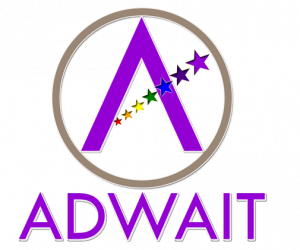1. Greetings and Introductions
- Adwait Yoga School: A Sanctuary for Spiritual Awakening
- Our Mission: Illuminating the Path to Self-Realization
- The Essence of Kundalini Activation
- Welcoming You to Our Community
2. Background of Adwait Yoga School
- Origins and Vision
- The Foundation of Non-Dualism
- A Comprehensive Curriculum
- A Community of Seekers
- A Commitment to Authenticity and Integrity
- An Invitation to Journey Within
3. The Essence of Kundalini Activation
- Understanding Kundalini Energy
- The Transformative Potential of Kundalini Activation
- Kundalini Activation in the Advaita Tradition
- The Significance and Benefits of KAP at Adwait Yoga School
- Significance in the Advaita Context
- Benefits of Engaging in KAP Level 1
- The Journey of Kundalini Activation Process Level 1
- A Personal Invitation
4. Overview of KAP Level 1
- Course Objectives
- Course Structure
5. The Importance of Preparedness
Physical Preparedness 21
Mental and Emotional Readiness 21
Spiritual Preparedness 21
The Role of Preparatory Practices 21
Embracing the Journey with Preparedness 22
6. Guiding Principles and Philosophy
- The Non-Dualistic (Advaita) Perspective
- The Holistic Nature of Our Being
- The Journey Within
- Ethical Living and Spiritual Integrity
- The Importance of Guidance and Community
- A Commitment to Growth and Transformation
7. The Role of the Guru in Kundalini Activation
- Guru: The Dispeller of Darkness
- The Guru-Shishya Tradition
- Guidance Through the Complexities of Kundalini Activation
- The Importance of Personalized Guidance
- Sri Yogi Anand: A Guiding Light on Your Path
8. The Journey Ahead
- Embracing the Transformative Journey
- The Path of Self-Discovery
- Spiritual Awakening and the Expansion of Consciousness
- The Role of Challenges and Obstacles
- Walking Together in Support and Unity
9. Commitment to Practice
- The Essence of Commitment
- Cultivating a Daily Practice
- Dedication Amidst Challenges
- An Open Heart and Mind
- Engagement with the Community
- The Role of the Guru
10. Support and Community
- The Power of a Spiritual Community
- Support Through Shared Experiences
- The Role of Mentorship and Guidance
- Cultivating a Compassionate and Non-Judgmental Space
- Engagement and Participation
- A Community of Lifelong Learners
11. Introduction to Kundalini Energy
- Understanding Kundalini Energy
- Kundalini: The Primal Energy Within
- Origins and Significance
- The Nature and Purpose of Kundalini
- The Awakening Process
- Signs of Kundalini Awakening
- The Kundalini Process
- Causing Ida and Pingala to flow evenly
- Getting centered
- Transitions between Ida and Pingala
- Transitions bring calmness to the mind
- Beginning of joy in meditation
- Even breath between the nostrils
- Alternate nostril breathing
- Hatha Yoga balances Ida and Pingala
- Autonomic nervous system
- Activities during the day
- Solid foods and liquids
- Causing Prana to flow in Sushumna
- Ida and Pingala flow along the spine
- Meditation at Ajna Chakra
- Breath at the nostrils
- Yoga Nidra
- Ida and Pingala also join at the ganglion impar
- Between the ganglion of ribes and the ganglion impar
- Versions of up and down practice
- Kriya and Kundalini Yoga
- Stimulating these energy systems
- Root lock and Prana
- Prana enters the mouth of Sushumna
- Sushumna Awakening is sustained
- Critical point on the journey
- Mistaking Sushumna for Kundalini Awakening
- Awakening the Kundalini energy
- Kundalini Awakening is for all
- Methods of Kundalini Awakening
- Mediate and immediate methods
- To rise part way is most common
- Leading the Kundalini upward 41
Awakening versus leading Kundalini 41
Kundalini itself becomes a guide 41
Joining Kundalini with the crown chakra 41
Shakti becomes like a lion 41
Preparation is imperative 42
Open and Closed chakras 42
Three knots or granthis are broken 42
Urdhva retas or upward traveling 42
Mind is a barrier 43
Breath is subtler 43
Purify to be ready to purify 43
Signs of Kundalini Awakening 43
Physical and Spiritual Experiences 44
Fearlessness begins to come 44
One-pointedness and non-attachment 44
The Role of Kundalini in Personal Transformation 44
Kundalini in Various Traditions 45
Kundalini in Modern Practice 45
Shaktipata 45
Conclusion 45
The Chakras 46
12. Historical and Spiritual Background of Kundalini Yoga 51
Vedic Origins 51
Upanishadic Insights 51
Tantric Influence 51
Integration with Yoga Tradition 51
The Role of Gurus and Lineages 52
Kundalini Yoga in the Modern Era 52
Spiritual Significance 52
13. Core Principles and the Philosophy behind Kundalini Activation 53
The Principle of Energy Awakening: 53
Unity of Body, Mind, and Spirit: 53
The Philosophy of Chakras and Energy Channels: 53
The Role of the Guru 53
Integration with Advaita Philosophy 54
The Goal of Self-Realization 54
14. Philosophy Into Practice
- 1. Understand the Core Principles
- Set Intentions for Practice
- Incorporate into Daily Routines
- Apply in Interactions with Others
- Reflect and Journal
- Engage in Community and Sangha
- Seek Guidance from Teachers or Mentors
- Embrace Challenges as Opportunities for Growth
- Continuous Learning and Adaptation
- Conclusion
15. Foundations of Kundalini Activation
- What is Kundalini Activation? 57
Managing Kundalini Energy 57
Flexible and Strong Body 57
The Role of Yogic Diet for Flexibility and Strength in Kundalini Activation Process (KAP) 58
The Role of the Chakras 60
Pranayama and Meditation 60
Ethical Living and Self-Discipline 60
The Importance of a Guided Practice 60
Physical and Energetic Preparation 60
Devotion and Surrender 61
Integration into Daily Life 61
Conclusion 61
16. Preparation For Kundalini Activation
Introduction to Preparation 62
Physical Preparation 62
Mental Preparation 62
Emotional Preparation 62
Creating a Conducive Environment 62
Conclusion 63
17. Guidelines For Safe Practice
Introduction to Safety 64
Finding a Qualified Teacher 64
Physical Considerations 64
Emotional and Psychological Awareness 64
Balanced Lifestyle 64
Ethical Considerations 64
Conclusion 65
18. Benefits and Potential Experiences
Introduction to Benefits and Experiences 66
Physical Benefits 66
Mental and Emotional Benefits 66
Spiritual Benefits 66
Navigating the Journey 66
Conclusion 67
19. Faq and Common Challenges
Introduction to FAQs and Challenges 68
Frequently Asked Questions (FAQs) 68
Common Challenges 68
Conclusion 68
20. Integrating Kundalini Practices Into Daily Life
Introduction to Integration 69
Mindfulness and Awareness 69
Regular Practice and Discipline 69
Applying Kundalini Principles 69
Community and Relationships 69
Conclusion 69
21. Conclusion and Further Steps
Summarizing the Journey 70
Key Takeaways 70
Next Steps in Your Practice 70
Further Resources 70
Final Thoughts 70
22. Self-Care and Balancing Energy 71
Introduction to Self-Care 71
Physical Self-Care 71
Emotional Self-Care 71
Spiritual Self-Care 71
Energy Balancing Practices 71
Conclusion 71
23. The Role of a Kundalini Teacher 72
Understanding the Role of a Teacher 72
Qualities of a Good Kundalini Teacher 72
Teacher-Student Relationship 72
Finding the Right Teacher 72
Conclusion 72
24. Managing Expectations and Personal Growth 73
Introduction to Managing Expectations 73
Setting Realistic Expectations 73
Embracing Personal Growth 73
Balancing Aspirations with Patience 73
Conclusion 73
25. Post-Activation Practices and Integration
Introduction to Post-Activation Integration 74
Sustaining the Energy 74
Integration into Daily Life 74
Dealing with Sensitivities 74
Long-Term Growth and Development 74
Conclusion 74
26. Cultivating a Supportive Community
Introduction to the Importance of Community 75
Finding or Creating a Community 75
Benefits of a Supportive Community 75
Engaging Respectfully with the Community 75
Conclusion 75
27. Reflecting And Journaling Your Journey
Introduction to Reflecting and Journaling 76
Benefits of Journaling 76
How to Journal Effectively 76
Incorporating Creative Expression 76
Reviewing and Reflecting 76
Conclusion 76
28. Techniques For Kundalini Activation
1. Asanas (Physical Postures) 77
2. Pranayama (Breath Control) 77
3. Bandhas (Body Locks) 77
4. Mudras (Hand Gestures) 77
5. Meditation and Visualization 77
6. Sound and Mantra Chanting 78
7. Shaktipat (Energy Transmission) 78
29. Yoga Asanas
The Significance of Asanas in KAP 80
Asanas and Their Specific Roles in KAP 80
The Transformative Journey of KAP Through Asanas 81
Integration of Asanas into Daily Practice for KAP 81
Conclusion 81
30. Preparatory Part 1: Joint Exercises
31. Preparatory Part 2: Root Activation
84
Awareness | Periodic rest | No strain | Contra-indications | Base positions 84
32. Preparatory Part 3: Core Activation
Relaxation in Shavasana (Corpse pose) 85
33. Surya Namaskar (Sun Salutation)
The Essence of Surya Namaskar 86
Physical Benefits for KAP 86
Energetic Activation 86
Mental and Emotional Preparation 86
Integration with Breath and Mantra 86
Regular Practice and its Role in KAP 87
Conclusion 87
Surya Namaskar Overview 87
The Practice of Surya Namaskar 88
34. Asanas (Yoga Postures)
35. Pranayama (Breath Work)
Pranayama Overview 133
Transformative Effects of Pranayama in KAP 134
Conclusion 134
Naadi (Energy Channel) 134
The Koshas (Sheaths) 136
Bodies 136
The Gross Body 137
The Subtle Body 137
The Causal Body 138
Five Prana Vayus (Airs) 138
Three Aspects of Pranayama 139
Essential Guidelines of Pranayama 139
The Process of Incorporating Pranayama into KAP 141
Types of Pranayama 142
36. Bandhas (Locks)
1. Mula Bandha (Root Lock) 149
2. Uddiyana Bandha (Abdominal Lock) 150
3. Jalandhara Bandha (Chin Lock) 151
General Considerations for Practicing Bandhas in KAP 152
37. Mudras (Gestures)
1. Ashwini Mudra (Horse Gesture) 153
2. Vajroli/Sahajoli Mudra (Thunderbolt Mudra) 154
3. Bhujangini Mudra (Cobra Respiration) 155
4. Chin Mudra (Gesture of Consciousness) 156
5. Shambhavi Mudra (Eyebrow Center Gazing) 156
6. Gyan Mudra (Mudra of Knowledge) 157
General Considerations for Practicing Mudras in KAP 158
38. Sound and Mantra Chantiing for KAP
Introduction to Sound and Vibrational Healing 159
The Role of Sound in Kundalini Activation 159
Foundations of Mantra Chanting 159
Integrating Sound and Mantra into KAP 159
Sound and Mantra in Group Settings 160
Integration into Daily Life 160
Ethics and Lifestyle 160
Support and Community 160
What is Mantra? 160
Practical Techniques in Mantra Chanting 161
Beeja (Seed) Mantras – Sound of Chakras 162
39. Meditation
Understanding Meditation in the Context of KAP 164
Integrating Meditation into KAP 164
Considerations and Contraindications 164
Conclusion 166
Proper Postures 166
Proper Breathing 171
Proper Awareness 172
KAP Meditation #1: Chakra Meditation 173
KAP Meditation #2: Mantra Meditation 175
KAP Meditation #3: Kriya Yoga Meditation 177
KAP Meditation #4: Breath Awareness 178
40. Shaktipat (Energy Transmission) for KAP
Introduction to Shaktipat 181
The Mechanisms of Shaktipat 182
Preparing for Shaktipat 189
Experiencing Shaktipat 190
Integration and Grounding 192
Role of Shaktipat in KAP 193
Becoming a Shaktipat Giver 195
Challenges and Misconceptions 196
Conclusion and Continuing Journey in Shaktipat and KAP 198
41. Kundalini Anatomy
201
Nadis / Energy Channel 201
Breath and the three main Nadis 203
Kundalini Caduceus 206
Chakras 207
Nervous System 211
Endocrine System 221
Respiratory System 226
42. Professional Essentials
1. Deep Understanding of Kundalini Energy 233
2. Comprehensive Training and Personal Experience 233
3. Proficiency in Energy Work and Yogic Practices 233
4. Strong Ethical Standards and Integrity 233
5. Empathy and Compassion 233
6. Effective Communication Skills 233
7. Ability to Hold Space 234
8. Adaptability and Intuition 234
9. Continuous Personal and Professional Development 234
10. Crisis Management and Support Skills 234
Conclusion 234
43. Designing KAP Session 235
1. Setting Clear Intentions 235
2. Creating a Sacred Space 235
3. Grounding and Centering 235
4. Energizing and Balancing 235
5. Cultivating Awareness and Presence 235
6. Guided Kundalini Activation Practices 235
7. Integration and Grounding 236
8. Closing Ritual 236
9. Post-Session Support 236
10. Continuous Learning and Adaptation 236
Conclusion 236
44. Offering KAP Session to an Individual 237
1. Pre-Session Consultation 237
2. Creating a Comfortable Environment 237
3. Tailoring the Practice 237
4. Grounding and Centering 237
5. Guided Kundalini Activation Techniques 237
6. Continuous Monitoring and Adjustment 237
7. Integration and Relaxation 238
8. Post-Session Debrief 238
9. Follow-Up 238
10. Encourage Personal Practice 238
Conclusion 238
45. Offering KAP Session to a Group 239
1. Pre-Session Preparation 239
2. Creating a Sacred Space 239
3. Opening Circle 239
4. Guided Practices 239
5. Energy Work and Observation 240
6. Integration and Closing 240
7. Post-Session Support 240
8. Continuous Learning and Reflection 240
Conclusion 240
46. Offering KAP Sesion Online
1. Technology Setup and Platform 241
2. Pre-Session Communication 241
3. Creating a Virtual Sacred Space 241
4. Session Structure 241
5. Interactive Components 241
6. Energy Sensing and Adjustment 242
7. Recording and Privacy 242
8. Post-Session Support 242
9. Continuous Improvement 242
Conclusion 242
47. The Practicum of KAP 243
Introduction to Practicum 243
Objectives of the Practicum 243
Components of the Practicum 243
Assessment and Feedback 244
Conclusion 244
48. Closing and Blessings 245
A Benediction for Your Journey 245
Gratitude for Your Trust and Commitment 245
An Invitation to Embrace the Journey 245
The Power of Community and Shared Experience 245
A Prayer for Your Spiritual Unfolding 245
49. Bibliography 247








